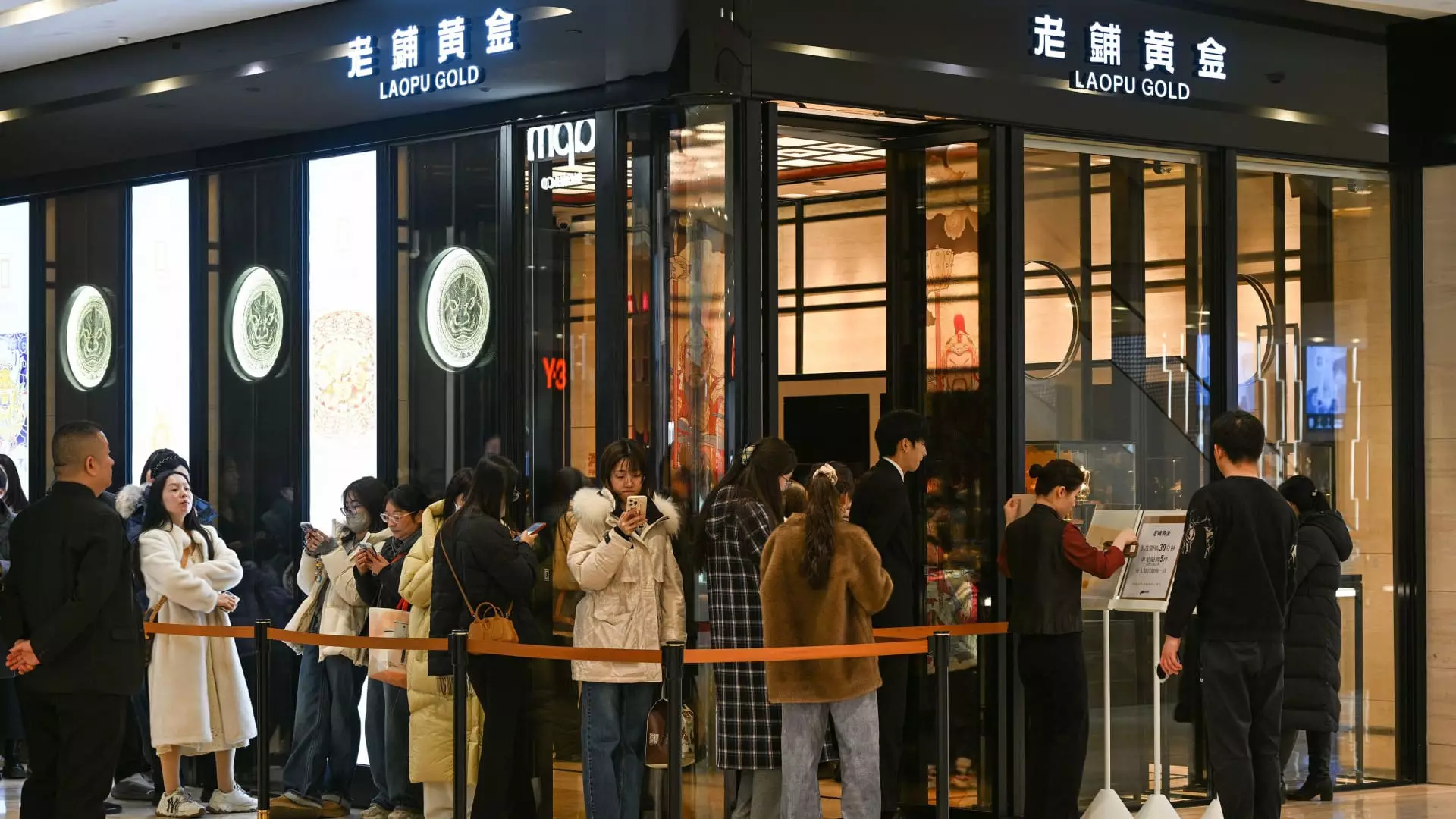In what appears to be a fragile recovery, recent earnings reports from major Chinese companies suggest that consumer spending is beginning to rebound, but at a pace that remains markedly below pre-pandemic levels. Alibaba and JD.com have both reported an uptick in retail revenue during the last months of 2024 compared to 2023, a sign that consumer spending is moving in the right direction. However, this improvement does not come close to the robust growth trajectories seen before the COVID-19 pandemic. As Charlie Chen from China Renaissance Securities succinctly puts it, we’re witnessing a “healthy recovery,” yet the shadows of uncertainty loom large.
To regain footing on solid ground, revenue growth in the consumer sector must achieve double-digit increases, paired with a significant boost in consumer confidence. Here lies the crux of the matter: the recent downturn in the real estate market has undoubtedly crushed consumer sentiment, further complicating the trajectory of economic revival. The irony is stark. The very challenge that has eroded confidence—namely, the real estate crisis—is the same backdrop against which policymakers are now fervently trying to cultivate consumption.
Government Interventions: Are They Enough?
In a bid to restore consumer spending, Chinese authorities have ramped up consumption-stimulating policies. These initiatives include an expanded trade-in subsidy program that now encompasses smartphones alongside previously targeted home appliances and electric vehicles. Yet, while JD.com has cited direct benefits from this program, reporting a 15.8% growth in sales of electronics and home appliances in Q4 2024, the reality is more nuanced. The bigger picture reveals year-on-year full-year growth of merely 4.9%, marking only the smallest flicker of recovery since the exhilarating surge of 2021.
This brings us to another awkward truth: there is a thin line between stimulating consumption and merely inflating consumer expectations. Sandy Xu, CEO of JD.com, acknowledges the existing macro challenges, yet she projects an optimistic outlook for consumer sentiment in the long term. It raises the question: Are we being overly optimistic in the face of stagnation? Policies aimed at bolstering purchasing activity must not only be well-intentioned but also effectively address the root causes of economic malaise.
Niche Markets: Not All Are Suffering
Interestingly, while many large conglomerates grapple with sluggish consumer demand, some niche markets have defied the downturn. For instance, Laopu Gold has reported an astonishing 236% increase in net profit in 2024. This success speaks to the fact that while many sectors are floundering, Chinese consumers still exhibit a willingness to spend on luxury and unique products, particularly those that resonate with their cultural identity. Similarly, toy company Pop Mart has experienced a significant surge, reflecting a shift in consumer focus toward entertainment and leisure activities—a vital lesson in adaptability.
The contrast among different sectors highlights a critical insight: not all consumer goods are receiving equal attention. The economy may be experiencing a slowdown, but areas that provide emotional fulfillment or cater to niche interests can still thrive. This is a reminder that consumer behavior is not wholly uniform; they are selective in where they choose to invest their hard-earned yuan.
The Struggle of Everyday Retailers
In stark contrast to the successes of companies like Laopu Gold and Pop Mart, everyday retail chains and businesses focused on consumer staples are feeling the squeeze. Retail chains like Miniso experienced a modest growth of 10.9%, while international coffee and bubble tea brands reported dwindling sales figures. Retailers who thrive on affordability and routine purchases have found themselves in a vice, challenged by both competitive pricing pressures and a diminished appetite among consumers.
Brands like Luckin Coffee and Starbucks are witnessing declines, some as high as 6% in same-store sales. This may signal a more concerning trend—one where even popular chains cannot guarantee stability amid shifting consumer priorities and aggressive discounting from competitors. Amid a rapidly changing landscape wherein economic recovery remains uneven, retailers must reevaluate their strategies to survive.
Macro Challenges Loom Large
The overall picture reveals a disjointed rhythm within the Chinese consumer market. While some sectors soar, overall consumer confidence remains teetering, plagued by slow economic indicators and persistently high unemployment rates. The initial data for early 2024 showcases modest retail sales growth compared to soaring double digits in the years leading up to the pandemic. Without consistent and sustainable government policy support targeting not only immediate consumer behavior but also long-term economic stability, the specter of stagnation will hover over these recovery efforts.
As we can see, while aspects of China’s consumer landscape showcase glimmers of hope amidst adversity, the road back to pre-pandemic consumer behavior is fraught with complexity. For true revitalization, a more robust strategy is needed that not only reinforces current spending but also fosters a renewed sense of trust and optimism among consumers.

